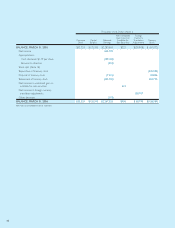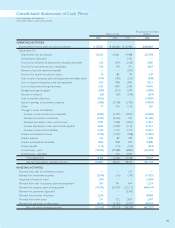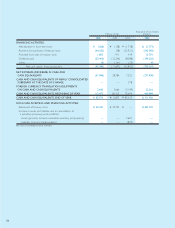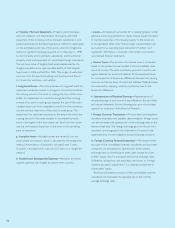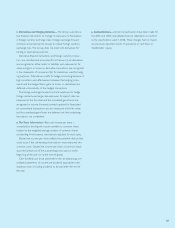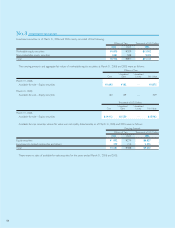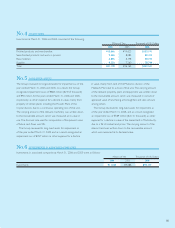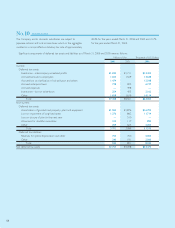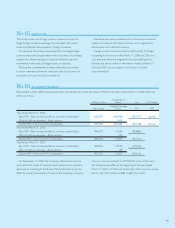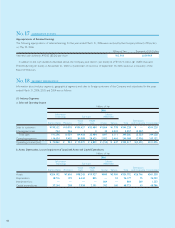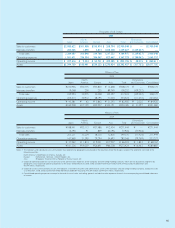Pentax 2006 Annual Report Download - page 60
Download and view the complete annual report
Please find page 60 of the 2006 Pentax annual report below. You can navigate through the pages in the report by either clicking on the pages listed below, or by using the keyword search tool below to find specific information within the annual report.
Under the Japanese laws and regulations, the entire amount of
payment for new shares is required to be designated as common
stock, although, generally, a company may, by a resolution of the
Board of Directors, designate an amount not exceeding one-half
of the price of the new shares as additional paid-in capital, which
is included in capital surplus.
Japanese Company Law (“the Law”) became effective on May
1, 2006, and, at the same time, the Japanese Commercial Code
was repealed (“the Code”).
Under the Code, companies were required to set aside an
amount equal to at least 10% of cash dividends and other cash
appropriations as legal earnings reserve until the total of legal
earnings reserve and additional paid-in capital equaled 25% of
common stock. Under the Law, in cases when dividends are paid,
an amount equal to 10% of the dividends or the excess of 25%
of common stock over the total of additional paid-in-capital and
legal earnings reserve, whichever is the smaller, must be set aside
as additional paid-in-capital or legal earnings reserve. Under the
Code, additional paid-in capital and legal earnings reserve were
available for distribution by the resolution of the shareholders’
meeting as long as the total amount of legal earnings reserve and
additional paid-in capital remained equal to or exceeded 25% of
common stock. Under the Law, even when the total amount of
additional paid-in-capital and legal earnings reserve is less than
25% of common stock, additional paid-in-capital and legal earnings
reserve may be available for dividends if there are sufficient distrib-
utable surplus. Under the Code, legal earnings reserve and addi-
tional paid-in capital could be used to eliminate or reduce a deficit
by a resolution of the shareholders’ meeting or may be capitalized
by a resolution of the Board of Directors. Under the Law, both
of those appropriations require a resolution of the shareholders’
meeting. Legal earnings reserve is included in retained earnings in
the accompanying consolidated balance sheets.
Both of the Code and the Law allow Japanese companies to
repurchase treasury stock and dispose of such treasury stock by
resolution of the Board of Directors. The repurchased amount
of treasury stock cannot exceed the amount available for future
dividend plus amount of common stock, additional paid-in capital
or legal reserve to be reduced in the case where such reduction
was resolved at the shareholders meeting. The Company retired
treasury stock of ¥53,181 million ($452,720 thousand) and
¥30,702 million during the fiscal years ended March 31, 2006
and 2005, respectively.
The general shareholders meeting held in June 2003 approved
the introduction of the Committees System stipulated in the
Code. Before the Committees System was introduced, dividends
had been approved by the general shareholders meeting held sub-
sequent to the fiscal year to which the dividends were applicable.
After introducing the Committees System, dividends may be paid
upon resolution of the Board of Directors, subject to certain limi-
tations imposed by the Code. Semiannual interim dividends may
also be paid upon resolution of the Board of Directors, subject to
certain limitations imposed by the Code.
No. 9 SHAREHOLDERS’EQUITY



